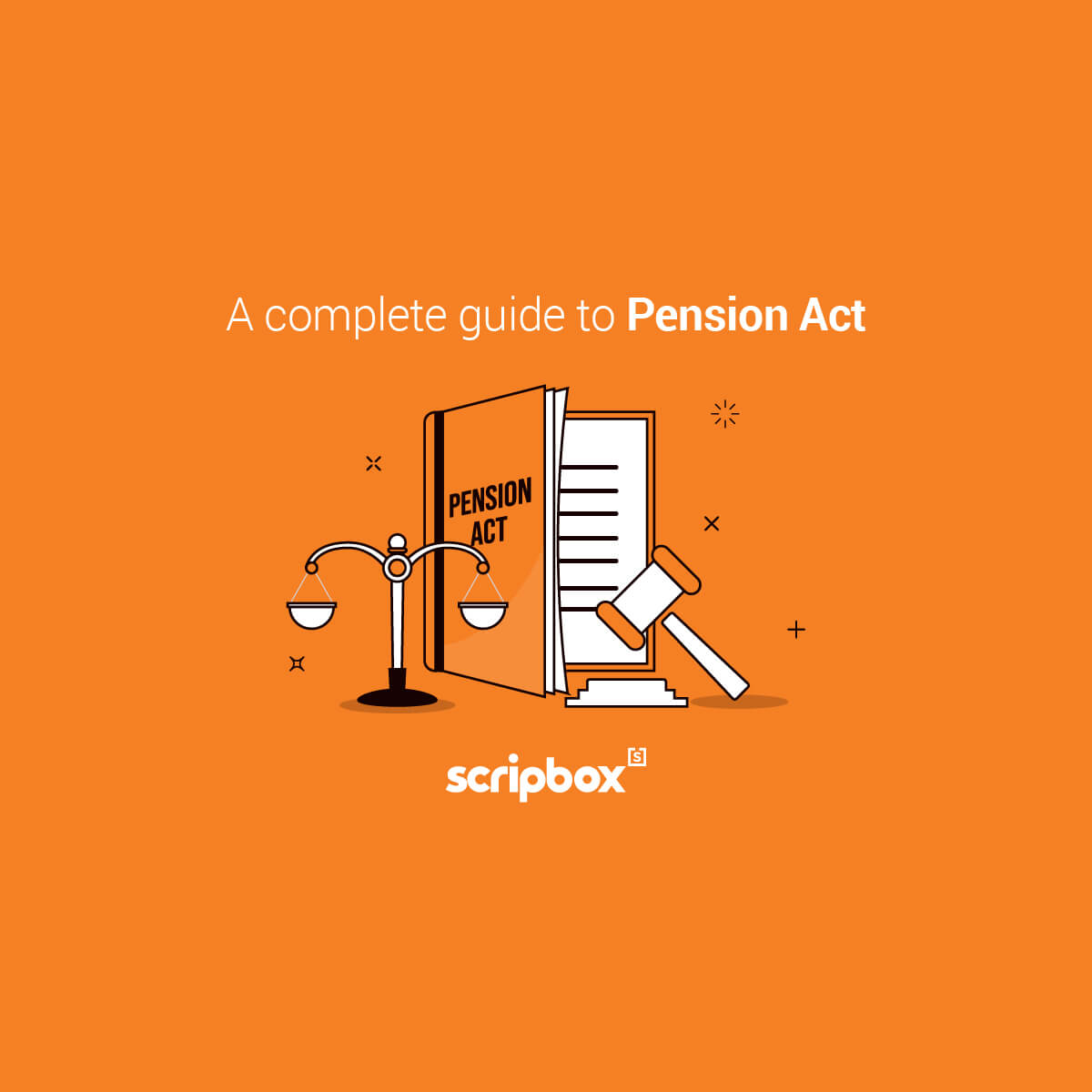Provident Fund is a traditional and popular savings scheme in India. There are three types of Provident Fund in India – General Provident Fund (GPF), Public Provident Fund (PPF) and Employees Provident Fund (EPF). However, the features, contributions, benefits and rules and regulations differ for the three types of provident funds. In this article, we will discuss the General Provident Fund (GPF) scheme along with its features, eligibility, account opening process, withdrawal process, and the difference among the three provident funds.
What is General Provident Fund (GPF)?
The full form of GPF is General Provident Fund. GPF is a type of PPF account for all government employees in India. Also, this account allows government employees to contribute a certain percentage of their salary to the General Provident Fund. Hence, the total amount accumulated during the employment term is paid at retirement to the employee.
The rate of interest of GPF is revised periodically as per the government regulations. However, the current rate of interest of GPF is 7.10% p.a.
Once an individual subscriber applies for the General Provident Fund, they need to contribute money unless there is a case of suspension. Moreover, as per the government rules, one can stop the payment to the GPF account three months before the date of retirement.
GPF Interest Rate 2023-24
The government revises the GPF interest rate every quarter. The latest GPF interest rate for 2023-24 is 7.10% p.a.. It has been issued in the notification given by The Budget Division of the Department of Economic Affairs at the Ministry of Finance. The historical interest rates for General Provident Fund are as follows:
| Periods | GPF Interest Rate |
| Oct 2023 – Dec 2023 | 7.10% p.a. |
| January 2023 – Sept 2023 | 7.10% |
| January 2022 – Dec 2022 | 7.10% |
| October 2021 – December 2021 | 7.10% |
| April 2021 – October 2021 | 7.10% |
| April 2020 – March 2021 | 7.10% |
| July 2019 – March 2020 | 7.90% |
| Oct 2018 – June 2019 | 8% |
| Jan 2018 – Sept 2018 | 7.60% |
| July 2017 – December 2017 | 7.80% |
| April 2017 – June 2017 | 7.90% |
| Jan 2017 – March 2017 | 8.00% |
The interest rate of 7.10% p.a. will be applicable to the below-mentioned funds:
- The General Provident Fund (Central Services)
- The Contributory Provident Fund (India)
- The All India Services Provident Fund
- The State Railway Provident Fund
- The General Provident Fund (Defence Services)
- The Indian Ordnance Department Provident Fund
- The Indian Ordnance Factories Workmen’s Provident Fund
- The Indian Naval Dockyard Workmen’s Provident Fund
- The Defence Services Officers Provident Fund
- The Armed Forces Personnel Provident Fund
Features of General Provident Fund (GPF) Scheme
The following are the main features of the GPF scheme
- Management: The GPF scheme is managed by the Department of Pension and Pensioner’s Welfare under the Ministry of Personnel, Public Grievances, and Pensions.
- Membership: As per the Pensioners official portal, to become a member of GPF, the government employees must start contributing a certain portion of their salary to the GPF account.
- Contribution: One must contribute towards the GPF account monthly except during the period where the subscriber is under suspension. Furthermore, the subscriptions will halt 3 months before the date of retirement/superannuation.
- Payment: Once the subscriber retires, they will receive an immediate payment of the final balance. Moreover, one need not submit an application form to get the final payment from the General Provident Fund.
- Nomination: At the time of joining the fund, the subscriber needs to nominate a family member. Thus, the nominee gets the right to receive the accumulated amount from the fund in the event of the subscriber’s demise.
- Death Benefit: As per the GPF rules, the nominee receives an additional amount in case of the death of the subscriber. Thus, the additional amount is equal to the average balance in the GPF account for 3 years immediately preceding the death of the subscriber. However, this is subject to certain terms and conditions.
The additional amount that is payable under this rule should not exceed Rs. 60,000. Furthermore, the nominee can avail of this benefit only when the subscriber is in service for at least 5 years at the time of his/her death. - Tax Benefit: Investing in GPF one can avail tax benefits on interest earned, contributions and the returns under Section 80C of the Income Tax Act, 1961.
GPF Rules
Deposit Rules
- Maximum amount: The maximum contribution to the GPF account should not exceed the total income of the contributor.
- Minimum amount: The minimum contribution must not be less than 6% of the total income.
- Frequency: The contributor must make monthly contributions to the account unless the subscription is suspended.
- Maturity date: The deposits mature only at the time of retirement or superannuation.
Nomination Rules
The nomination rules allow contributors to add a nominee to the GPF account at the time of subscription. The nominee must be a family member, and the contributor can declare the share of each nominee. It is also possible to add more than one nominee.
Withdrawal Rules
The non-refundable GPF withdrawal rules specify when and how much a subscriber can withdraw funds. The basic criterion for non-refundable withdrawal is that the subscriber should have completed at least 15 years of service or be within 10 years of the date of retirement or superannuation (whichever is earlier). The following are GPF withdrawal rules:
- A subscriber must have completed at least 10 years of service to be eligible to withdraw from their GPF.
- Withdraw 75% of the outstanding balance amount in their GPF or 12 months’ emoluments, whichever is lower. This amount can be used for funding education, a marriage of self or a dependent family member, or any other ceremony.
- In case of illness of a dependent family member or self, individuals can withdraw up to 90% of the outstanding balance. This amount can be availed within 7 days for such purposes.
- Subscribers can also finance the purchase of a house, land for the construction of a house, repayment of an existing home loan, reconstruction or renovation of a home, or repair of an ancestral house by means of GPF withdrawal. The maximum amount can be 75% of the outstanding balance in the General PF.
- Withdrawals can also be made to buy a vehicle, deposit for purchasing a vehicle, repay a car loan, or repair a vehicle. The maximum amount is 75% of the balance or 3/4th of the cost of such a vehicle, whichever is lower.
- Suscribers can withdraw 90% of the balance amount in their GPF without providing any cause before 2 years from retirement.
- Subscribers can withdraw from their accounts to purchase consumer durables such as washing machines, air conditioners, etc. However, the withdrawn amount must be utilized only for the stated purpose.
- In the event of a subscriber’s death, the outstanding amount can be released. The nominee is entitled to an additional amount equal to the average of three years of PF balance preceding such an event. However, such an additional amount cannot exceed INR 60,000.
- The GPF rules state that a subscriber must have completed a minimum of 5 years of service to be eligible for additional benefits in the form of part final withdrawal. Subscribers are entitled to the full amount in their account upon retirement or superannuation.
Advance Rules
- GPF contributors can get an advance of up to 3 months’ pay or half the account balance (whichever is lower).
- Advance for the purpose of higher education for a dependent family member or any event such as marriage.
- An advance in case of a medical emergency for oneself or a dependent family member.
- Advance for purchasing large home appliances such as TV, air conditioners, or washing machines. However, the funds must be utilized only for the stated purpose.
- Advance to meet the costs of legal proceedings put on or against oneself or a dependent family member.
The advance amount must be paid back in equal instalments for up to 12-24 months. Recovery tenure extension can be obtained for 36 months if the advance payment is more than 3 months’ pay.
Eligibility for GPF Scheme
Any individual who fulfils the following criteria are eligible to open a GPF account-
- A resident Indian who is a government employee
- General Provident Fund is necessary for government employees to belong to a specific salary class.
- Any employee belonging to the private sector is not eligible for GPF
- It is essential for the government employee to contribute a certain percentage of their salary to become a member of the GPF
How to Open a GPF Account?
One can open a GPF account very quickly. Moreover, the GPF account is maintained by the AG office (Accountant General) of the respective States: and Central in the case of Central government employees. Subsequently, one has to fill an appropriate form and submit it to the Account General of respective states. They will, in turn, assign an account number. Also, they prescribe a monthly deduction from employees’ salary to DDO (Drawing and Disbursing Officer) of that Establishment. Furthermore, at the end of the financial year, a statement of credits and debits (on account of the loan) and closing balance, including interest accrued, is dispatched to the employee.
General Provident Fund Withdrawal Process
There are several purposes for which individuals can withdraw from their GPF account. There are specific limits and eligibility criteria for each withdrawal made. The below is the list of purposes for which an individual can withdraw from their GPF account –
Purchase of consumer durables, medical expenses, education and illness
- Limit: Up to 50% of the outstanding balance or half-year salary, including DP, whichever is lower.
- Eligibility: Can withdraw with the balance 10 years before retirement or on completion of 15 years of service (inclusive of broken periods), whichever comes earlier.
Purchase of a house or land, construction or reconstruction of the house, repayment of the outstanding mortgage or renovation of an ancestral home
- Limit: Up to 90% of the outstanding balance
- Eligibility: Can withdraw anytime during the service
Overhauling/extensive repairs of a motor car
- Limit: Up to 1/3rd of the credit balance or Rs.10,000, whichever is lower.
- Eligibility: Can withdraw after completing 26 years of service or 3 years before retirement.
Purchase of a two-wheeler or four-wheeler or repayment of loan taken for the purchase of two-wheeler or four-wheeler
- Limit: Up to 50% of the outstanding balance or Rs.4000 for two-wheeler and Rs. 22,000 for a four-wheeler.
- Eligibility: Can withdraw after completing 15 years of service or within 5 years before superannuation.
Payment of subscription to Group Insurance Scheme
- Limit: An amount equivalent to one year subscription fee towards Group Insurance Scheme.
- Eligibility: Can withdraw anytime during the service.
Charges for converting the leasehold to freehold of property allotted/transferred
- Limit: Up to 90% of the outstanding balance.
- Eligibility: All officials can withdraw the amount anytime.
Without assigning any reason before two years of retirement – Rule 15 (1) (Q)
- Limit: Up to 90% of the outstanding balance.
- Eligibility: individuals who are due to retire on superannuation within one year.
Difference between GPF, PPF and EPF
A provident fund is a savings scheme that aims to build a retirement corpus in the form of a lump sum. Also, it provides financial security to older people. Furthermore, there are three different types of provident funds in which individuals with income can invest. Hence, they are General Provident Fund (GPF), Public Provident Fund (PPF) and Employees Provident Fund (EPF). Firstly, let us understand these funds along with their differences.
General Provident Fund (GPF)
GPF is available only for government employees. Also, government employees must contribute a certain portion of their salary to subscribe to GPF. After the continuous service of one year, all the temporary government employees, all the permanent government employees, and all the re-employed pensioners are required to subscribe to the fund. Furthermore, GPF is taken care of by the Department of Pension and Pensioner’s Welfare.
Employees Provident Fund (EPF)
EPF is a government-backed savings scheme. Moreover, it offers social security to employees working in the structured sector. Also, any organisation consisting of twenty or more employees is authorised to be registered under the EPF scheme. Thus, the Employees Provident Fund Organization (EPFO) regulates the EPF scheme under the Employees Provident Fund and Miscellaneous Provisions Act, 1952. Additionally, if the employee completes 10 years of service, he/she will be eligible for pension under the Employees Pension Scheme (EPS).
Explore EPF Interest Rate FY 2025
Public Provident Fund (PPF)
PPF is also a government-backed long term savings scheme. It was launched in 1968 under the Public Provident Fund Act 1968. Under this scheme, both salaried, as well as self-employed people having business income, can subscribe for PPF. In other words, anyone can subscribe to PPF. Also, enrolling for a PPF depends on the choice of the individual. However, a subscription of GPF and EPF is compulsory for the eligible employee.
Explore: PPF Interest Rates 2025
Compare GPF vs PPF vs EPF
| Parameters | GPF | EPF | PPF |
| Eligibility | Only government employees | Only organised sector employees | All resident Indians |
| Interest rate | 7.10% p.a. | 8.25% p.a. | 7.10% p.a. |
| Deposit Limit | Minimum contribution up to 6% of salaryThe maximum contribution is 100% of employee’s salary | Minimum contribution up to 12% of employee’s salary | The minimum contribution is Rs.500 per year The maximum contribution is Rs.1.5 lakh per year. |
| Maturity Period | Till retirement | Till age of 58 years | 15 year term |
| Premature closure | On leaving or suspension from government service | On 2 months of unemployment of subscriber | Allowed after completion of 5 years on child’s education or medical reasons |
| Loan Facility | Loan can be availed anytime during the service of the government employee | No loan facility, only partial withdrawals allowed | Loan against PPF can be taken only on the 3rd and 6th financial year from the date of opening the PPF account |
All the three provident funds provide tax deduction under Section 80C of the Income Tax Act, 1961. Furthermore, the interest earned on all three provident funds is tax-free.
Conclusion
Therefore, GPF is a mandatory savings scheme launched for government employees only. It also helps fulfil financial goals like children’s education, marriage, or medical emergencies. Being a government employee, GPF helps them save a substantial amount for their golden years.
RELATED READS




























Show comments